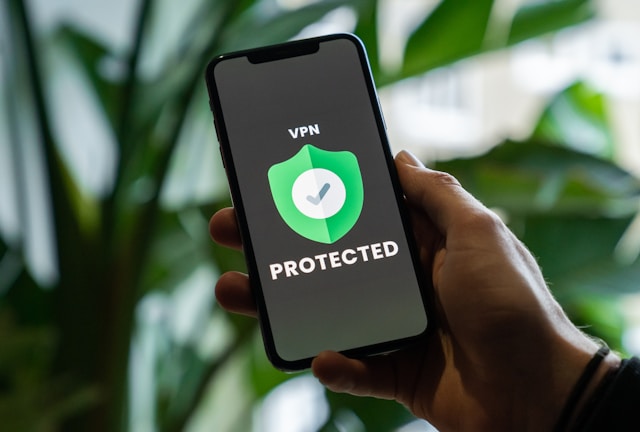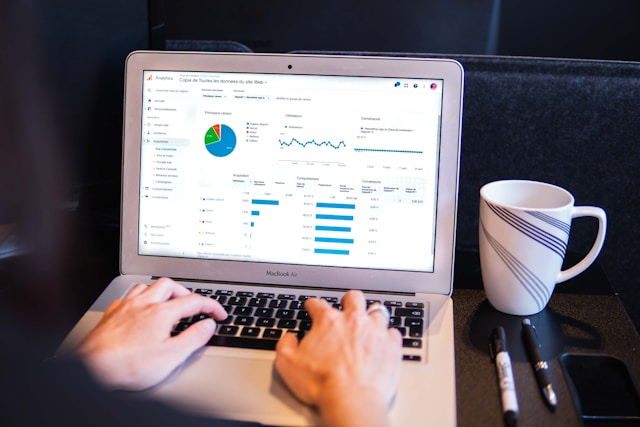While viewing stories on Instagram, you might have seen story ads by a restaurant after you recently ate there. Did you ever question how Instagram knows you were there even though you didn’t share a post about it? Businesses achieve this using a technique called mobile geofencing.
Businesses use mobile geofencing for various purposes. In today’s article, we’ll explore some key industry uses of mobile geofencing. We’ll also briefly go over the benefits that businesses reap from this technology.
But before starting, it’s important to understand what mobile geofencing is. So, keep reading for a brief overview!

Table of Contents
What Is Mobile Geofencing, and How Does It Work?
Mobile geofencing creates virtual boundaries around physical locations using GPS, Wi-Fi, and cellular data. When a mobile device crosses these boundaries, the geofencing technology triggers predefined actions within a mobile app. This technology has widespread usage in mobile devices running on iOS and Android platforms.
App developers integrate geofencing capabilities into mobile apps using APIs provided by platforms like Google and Apple.
For mobile geofencing to work, the mobile app with geofencing technology must access the device’s location data. This access is crucial for tracking the device’s movement within the geofenced area.
A geofence consists of coordinates (latitude and longitude) and a radius. This virtual perimeter can vary in size from a small room to an entire city. The fence can be circular or polygon-shaped based on the business’s requirements.
Geofencing software continuously monitors the device’s location through GPS, Wi-Fi triangulation, and cellular data. This process is efficient but can affect battery life.
When the device enters, exits, or dwells within the virtual boundaries, the geofencing software triggers specific actions. These actions can include sending push notifications, displaying ads, or activating features within the device.
Mobile geofencing serves various purposes across different industries. These applications can include geofencing mobile marketing, fleet management, home automation, and more. Let’s explore these applications one at a time.

Geofencing Mobile Marketing
Mobile geofencing in marketing targets mobile users with location-specific promotions. It often includes sending personalized offers, discounts, or reminders.
The process starts by defining a geofence around a real-world location using coordinates and a specified radius. When a device with enabled location services enters this area, it triggers marketing actions. These can range from push notifications to emails.
The North Face — a leading brand that sells seasonal apparel and gear — has been using geofencing since 2010. Their app sends users weather-appropriate product recommendations when they enter outdoor activity areas, such as hiking trails.
Initially, they had around 1,000 virtual boundaries in cities such as New York, San Francisco, Seattle, and Boston. This strategy was a success for the North Face. According to a report, 79% of customers visited the stores when they entered the geofences. This led 65% of them to make purchases.

Geofencing Mobile Advertising
Geofencing mobile advertising targets specific locations to display relevant ads to mobile users.
It involves using geofencing tools to mark areas around areas like competitor stores or event venues.
When a device enters or exits these virtual boundaries, it triggers the delivery of ads tailored to the user’s location. These ads can appear in various forms, such as banner ads, video ads, or in-app notifications.
For example, a coffee shop might set a geofence around a nearby college campus. When students enter this zone, they receive ads for discounts or promotions on their favorite coffees.
A practical example is the GasBuddy. The GasBuddy app with geofencing technology sends ads for nearby cheap gas stations when users are low on fuel. In 2021, the app gained huge popularity on both Apple and Android platforms when America was facing gas shortages.
Using geolocation tools, the app helped drivers find fuel stations near them with active supply and cheap prices.
Mobile Geofencing in Hospitality
Geofencing mobile technology improves guest experiences in the hospitality industry. Hotels use geofencing tools to interact with guests based on their location.
Upon arrival, a guest might receive a welcome message and a room upgrade offer from the hotel. During their stay, they could receive notifications about on-site events or dining discounts.
Popular hotels like Marriott, Hilton, and Starwood use geofencing for numerous purposes. They send personalized promotions, room upgrades, enable mobile check-ins, and guide guests to their rooms.
Starwood Hotels even has keyless room entry that allows guests to unlock doors with their smartphones upon reaching their rooms.
Mobile Geofencing in Healthcare
Mobile applications in healthcare use geofencing to improve patient engagement and operational efficiency. Healthcare providers use geofencing tools to send timely reminders and alerts to patients.
When a patient’s mobile device enters a geofence around a clinic, location services can send appointment reminders or check-in prompts. This reduces no-show rates and streamlines patient flow.
Popular Healthcare apps with geofencing technology include MyChart, Life360, and CarePredict. These apps improve patient care by sending appointment reminders and check-in prompts when patients enter geofenced areas around clinics.
CarePredict uses geofencing to monitor the movements of elderly patients and send alerts if they leave designated safe areas. These actions ensure timely and relevant healthcare interventions before any mishap could occur.
Mobile Geofencing in Home Automation
Home automation technology also heavily uses mobile geofencing. It integrates mobile device management (MDM) with geofencing software.
When a user enters a geo-fenced area near their home, geofencing software can automatically adjust settings for smart devices. For example, geofencing can turn on lights and unlock doors when you arrive home. It can also turn off appliances and set the security system when you leave.
For instance, the Nest app uses geofencing to adjust the thermostat as the user approaches home to optimize energy use. Similarly, the Philips Hue app can turn lights on or off for each room based on location.
Mobile Geofencing in Transportation and Logistics
Geofencing mobile technology optimizes transportation and logistics through efficient mobile device management.
In logistics, geofencing helps track vehicle locations, manage routes, and ensure timely deliveries. When a truck enters a geofenced delivery area, the system sends alerts to both the driver and recipient.
Uber has been using geofencing since 2015 to optimize the matching process between riders and drivers. By creating virtual boundaries around high-demand areas, Uber’s system can handle the highest query per second (QPS) rates efficiently.
This helps the system to quickly identify rider requests within these zones and dispatch the nearest available driver.

4 Benefits of Mobile Geofencing
Mobile geofencing has revolutionized how businesses operate. It has helped businesses attract passersby and increase their foot traffic and, eventually, sales. According to Salesforce, 80% of users of location services are willing to receive notifications from businesses.
The result is that 53% of customers, on average, visited shops upon getting these notifications.
Let’s explore what benefits geofencing mobile devices hold for businesses and organizations.

1. Increases Foot Traffic
Mobile geofencing targets local customers who are more likely to buy, which increases foot traffic significantly. By setting geofences around stores, businesses send personalized offers to nearby mobile users.
This real-time engagement drives customers into physical locations.
2. Keeps You Ahead of Your Competition
Using a strategy called geo-conquesting, businesses can set geofences around competitor areas to attract their customers. When mobile users enter these zones, they receive compelling offers to switch.
Burger King successfully used this strategy with their “Whopper Detour” campaign. The campaign sent notifications asking customers near Mcdonald’s to order a Whopper for one cent via the Burger King app. This required them to “detour” to Burger King to pick up their order.
The campaign led to 1.5 million app downloads and significantly boosted Burger King’s sales.

3. Reduces Marketing Cost
Geofencing helps reduce ad spend by targeting specific mobile users instead of broad populations. Marketers deliver ads to users near real-world locations, which ensures higher conversion rates.
This precision minimizes wasted ad budget and makes campaigns more cost-effective.

4. Collects Data for Insights
Geofencing provides valuable insights by tracking mobile users’ interactions within geofenced virtual boundaries. Businesses can monitor metrics like foot traffic patterns, dwell time, and conversion rates.
These insights help improve decision-making and marketing strategies, which in turn improves overall performance.
Geofence Mobile Devices With geoPlugin!
Mobile geofencing is cool and highly beneficial for businesses. But is there an affordable way to geofencing mobile apps? The answer is geoPlugin.
geoPlugin has been a leading geolocation service provider since its inception in 2006. It provides free IP geolocation and currency conversion. Moreover, geoPlugin can help you geolocate the nearest populated places and transport hubs.
By collecting user’s location data based on their IP address, you can build a massive database to use for mobile geofencing. Owning a database gives you the flexibility to use it for all other purposes, such as geo-pricing and geoblocking.
So sign up for geoPlugin today and enjoy fast and reliable geolocation service!











